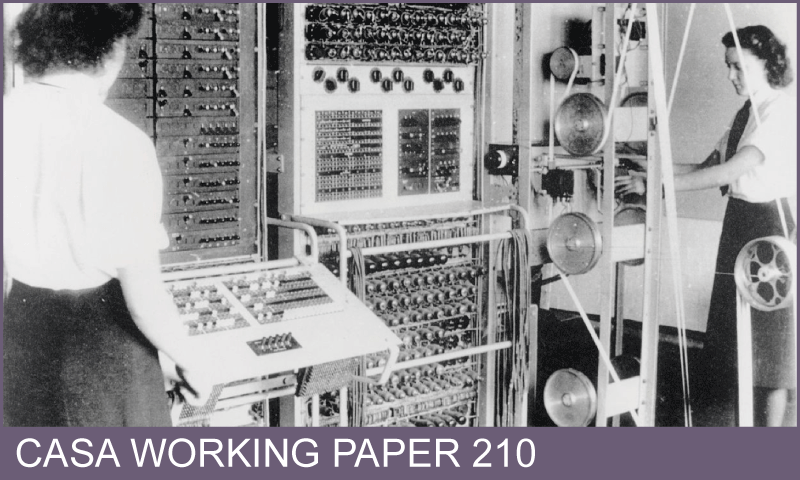CASA Working Paper 210
In this paper, Michael Batty highlights trends in technology and data that have changed how we live in the city over recent centuries.

23 June 2017
The Age of the Smart City
The smart cities movement defines a sea change in the way we will live in cities and the way they will function in the 21st century and beyond.
Cities are becoming computable and automated at every level of their operation (Batty, 1997) and there is a massive disconnect emerging between their physical form and social process. No one knows where this transition from a world based on energy to one based on information, will end up or when the recent wave of change in economic structure that appeared with the ‘big bang’ and massive deregulation in the 1980s culminating in the great recession, will work itself out.
In this paper, I will sketch the waves that have dominated technological change during the last 250 years, drawing on ideas suggested by Kondratieff and Schumpeter but beginning by focussing on the current wave – the so-called Fifth Kondratieff – which is dominated by the internet. This, however, is ending and a sixth wave which I call the Age of the Smart City is beginning to encapsulate and underpin everything we do in ways that were first envisaged by the earliest advocates of the universal machine such as Alan Turing (1948) and Vannevar Bush (1945).
I will sketch the transition showing how new technologies are being integrated with one another, how the reliance on generating and extracting data, thence information, about the city is changing the way we understand our own spatial behaviours, and how the functions of the future city will be increasingly disconnected from its form.
I will then speculate on how relevant the model is to the near and medium term future, and attempt to reconcile Moore’s Law and Kurweil’s Conjecture about the singularity with a future when we all live in cities and when world population may well lose the growth dynamic that has dominated its history over the last 500 years.
Author: Michael Batty
 Close
Close

